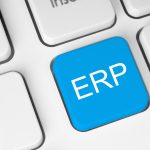6 Great Metrics To Measure ERP Success
Enterprise systems have become ubiquitous today. Almost everyone can afford to streamline their processes with the broad range of out-of-box, custom and cloud options that exist. While having ERP systems is standard, not nearly as much attention is being paid to the actual tangible results derived from them. Measurement, when done, is often one-dimensional: have we made a bigger dollar bottom line after the implementation? While that’s an excellent question, there are several other areas where you can get a clearer idea of whether your ERP system is working for you.
The first step is to define your metrics. Your measurement needs to be unique to you. Come up with a list of markers that matter in your business and track them.
Here are some suggestions:
1. Measure Your Downtime
This sounds like an odd one to start with! But post implementation, especially in newer set-ups, this is one of the best things to measure. The ideal way to see if your system is doing what it’s supposed to is to see if it’s working! Keeping an eye on downtimes and what causes them might be a good way to refine glitches. The lower your number, the better your performance. Simple!
2. Measure Hard Numbers
As we said above, bottom line numbers are probably everyone’s favourite kind of metric. Mostly because it’s the easiest to measure – numbers that tell a story are compelling! The easiest two numbers to measure are revenue increase and cost savings. And these are universally relevant. Start there if measurement hasn’t been a part of your strategy before.
3. Link Measurement To Your KPIs
As an organization, you have KPIs. For manufacturers, it might be your cycle time – the time it takes to produce and deliver an item. If you’re a retailer, it might be customer satisfaction. Are your number trends for those KPIs heading in the right direction? These are great metrics to track. They stay true to the business and its overall goals.
4. Measure Strategic Benefits
ERP systems come with excellent reports and dashboards that can be very useful to management, in particular, to better understand operations and manage things with more knowledge. It enhances decision-making abilities. Think about ways in which your ERP is improving your business strategy and agility and put some markers in place that you can measure. It’s easier than it sounds.
5. Measure Intangible Benefits
Customer experience is a great metric that’s not the most tangible or easy to track. Look into ways in which your ERP system might be making a difference here. Are streamlined processes allowing customer service agents more relationship management time? Looking at increased sales and reduced error and attributing the cause can help you figure out how your system might be playing a role.
6. Measure Employee Engagement
How your people are using the system is a perhaps the best way to judge it’s usefulness. Is it adopted quickly? Are people using it everyday? Has it replaced all legacy systems or are there still some stealth users hanging on to the old way? Greater adoption means the system is working better than what you had before, and that, while not the most direct of metrics, is a good one!





